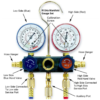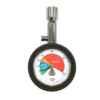Understanding Refrigerant Pricing

Over the years many people have noticed price volatility in the refrigerant market. Price fluctuations can make users feel concerned about whether they are getting fair pricing on their refrigerants, and wonder why the prices are not more stable. The reason can be answered with a simple sentence, “Refrigerant prices fluctuate because they are a commodity item,” but understanding that sentence becomes a bit more complicated.
As a commodity item, refrigerants have demands which do not fluctuate with variations in price. In other words, they are something that people need, not just want. Compare this to an everyday commodity item that everyone has experience with: gasoline. Gas prices fluctuate daily, but regardless of whether the price goes up or down, people will continue to need—and buy—gas. They may grumble or complain, but they’ll still buy.
What factors drive refrigerant pricing? Supply and demand; weather; speculation; regulations, financialization. The list is long and varied. While one might assume how any one of these variables can have an effect, when seen in combination with one another, they can truly wreak havoc with the refrigerant market.
Weather: Refrigerant pricing may not be as volatile as gasoline, but in the heat of summer one can expect to see refrigerant prices rise and in the cool winter they will generally drop. By contrast, if the country experiences a relatively mild summer, prices could plummet.
Competitive Selling: In order to compete in a commodity market, refrigerant suppliers must always be sensitive to and reactive to the pricing of their competitors. Sometimes price changes are based on nothing more than the aggressiveness of competitor pricing.
Competitive Purchasing: Larger dealerships and shops have the funds to purchase large quantities in the winter, the low-demand time for refrigerants when pricing is historically lowest. After storing the refrigerants until spring, they are able to pass along their lower prices to their customers even as their competitors are paying higher prices from distributors. This forces their competitors to lower their prices—and assume a smaller profit margin.
Shortages: Being a commodity, any shortages will greatly affect pricing. These shortages might be of an end product or any component of the end product. The shortages are usually due to government environmental and mining regulations in the US or abroad.
Phase Outs—or Threat of Phase Outs: Due to global legislation and agreements (The Montreal Protocol, the AIM Act, CARB, and the Kigali Amendment, most notably), refrigerant can react in sometimes unexpected and extreme ways. This is true whether the phase out is imminent, or planned to start at a later date.
Anti-Dumping Tariffs and Lawsuits: Simply put, an anti-dumping duty is a protectionist tariff on foreign imports that are priced below fair market value. In 2015, an anti-dumping petition was filed by a group of US refrigerant suppliers which alleged that large volumes of below-market priced HFC refrigerant blends and components from China were causing injury to the domestic refrigerant industry. The uncertainty from this, and its eventual resolution, wreaked havoc on refrigerant pricing.
It is clear that factors which affect the supply and demand are the key pricing drivers, and that for the most part, the variables above all play into that fundamental premise. It is helpful to understand these vital issues and why they are fiercely studied and debated.
LMK 2021





